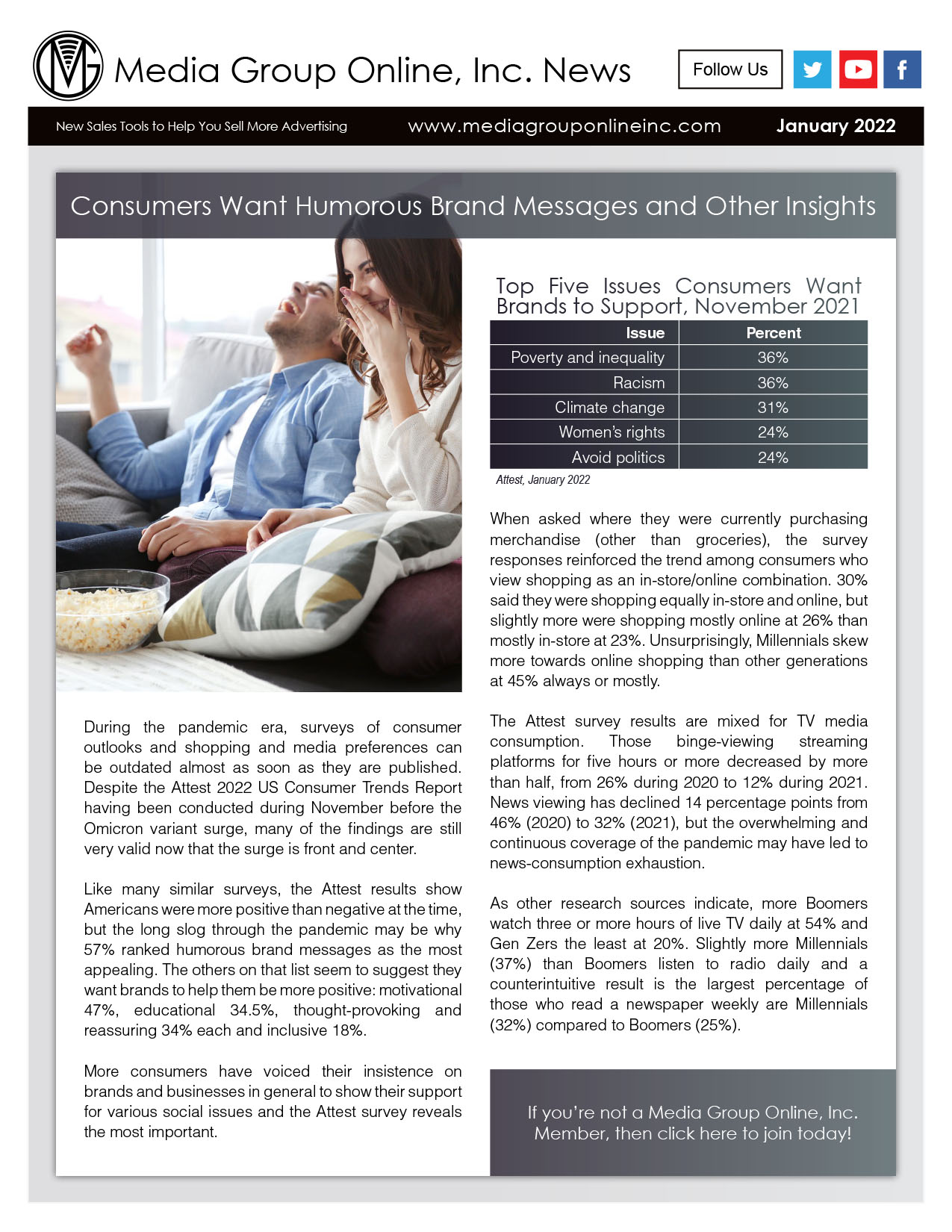Consumers Want Humorous Brand Messages and Other Insights
During the pandemic era, surveys of consumer outlooks and shopping and media preferences can be outdated almost as soon as they are published. Despite the Attest 2022 US Consumer Trends Report having been conducted during November before the Omicron variant surge, many of the findings are still very valid now that the surge is front and center.
Like many similar surveys, the Attest results show Americans were more positive than negative at the time, but the long slog through the pandemic may be why 57% ranked humorous brand messages as the most appealing. The others on that list seem to suggest they want brands to help be more positive: motivational 47%, educational 34.5%, thought-provoking and reassuring 34% each and inclusive 18%.
More consumers have voiced their insistence on brands and businesses in general to show their support for various social issues and the Attest survey reveals the most important.
Top Five Issues Consumers Want Brands to Support, November 2021
|
Issue |
Percent |
|
Poverty and inequality |
36% |
|
Racism |
36% |
|
Climate change |
31% |
|
Women’s rights |
24% |
|
Avoid politics |
24% |
Attest, January 2022
When asked where they were currently purchasing merchandise (other than groceries), the survey responses reinforced the trend among consumers who view shopping as an in-store/online combination. 30% said they were shopping equally in-store and online, but slightly more were shopping mostly online at 26% than mostly in-store at 23%. Unsurprisingly, Millennials skew more towards online shopping than other generations at 45% always or mostly.
The Attest survey results are mixed for TV media consumption. Those binge-viewing streaming platforms for five hours or more decreased by more than half, from 26% during 2020 to 12% during 2021. News viewing has declined 14 percentage points from 46% (2020) to 32% (2021), but the overwhelming and continuous coverage of the pandemic may have led to news-consumption exhaustion.
As other research sources indicate, more Boomers watch three or more hours of live TV daily at 54% and Gen Zers the least at 20%. Slightly more Millennials (37%) than Boomers listen to radio daily and a counterintuitive result is the largest percentage of those who read a newspaper weekly are Millennials (32%) compared to Boomers (25%).




